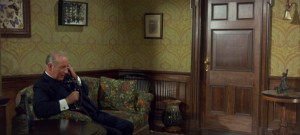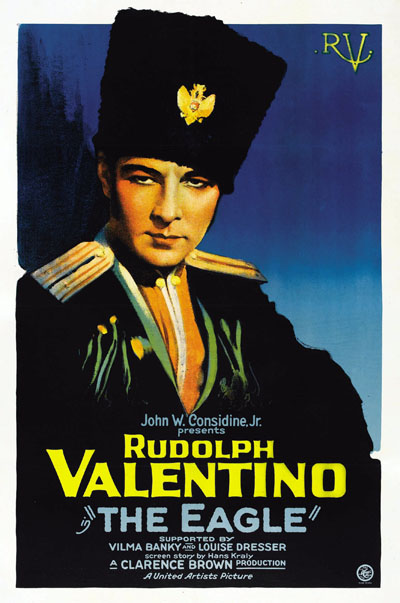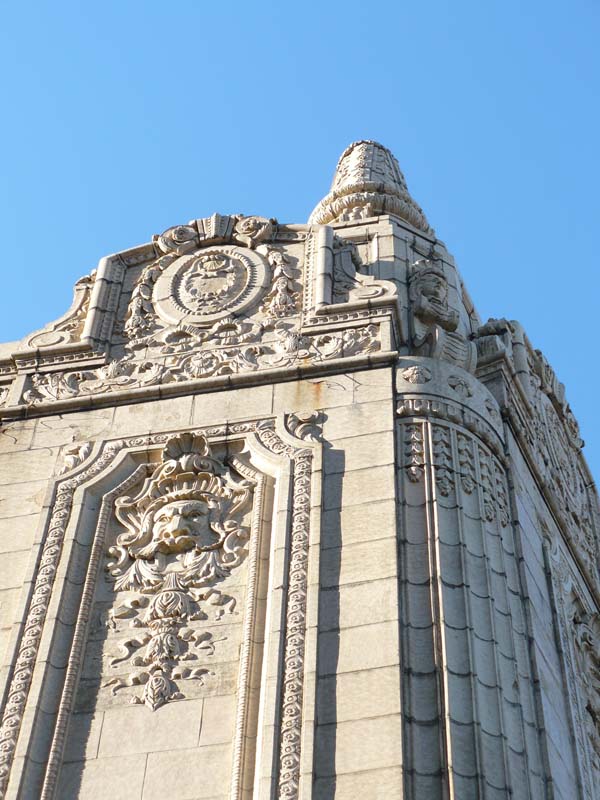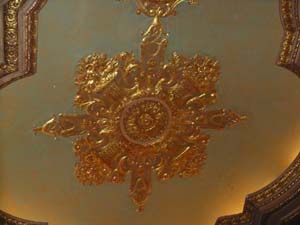I Prefer Pygmalion
August 29th, 2011
We recently watched the 1938 British film adaptation of Bernard Shaw’s 1912 play, starring Leslie Howard and Wendy Hiller. Pygmalion is my second favorite by Shaw, coming just after Caesar and Cleopatra and just ahead of The Devil’s Disciple in my humble estimation. And I owned a copy of the film on VHS as a child. I think my mother bought it to distract me from Gone with the Wind…
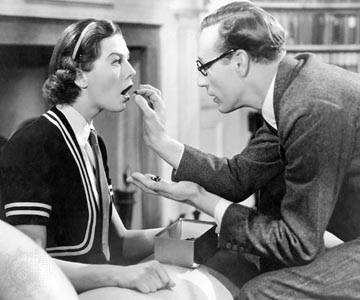
Anyway, seeing Pygmalion again kindled a desire to see My Fair Lady — or at least Hollywood’s 1964 version with Audrey Hepburn and Rex Harrison, reprising his Broadway role, originally delivered opposite Julie Andrews. I had the Broadway soundtrack on cassette, and later on LP, so have great affection for the score. Who doesn’t love Lerner & Loewe? But I must say, the film didn’t impress me in the least as I crocheted through all 170 minutes of it last weekend.
Compared to the soaring voice of Julie Andrews, Marni Nixon falls sadly flat. And the chemistry between Hepburn and Harrison is completely lacklustre. Even the edited dialogue is disappointing, after the refreshingly faithful 1938 film script. And where was that sparkling Shavian delivery that distinguishes Howard and Hiller’s exchanges? Every scene in the musical seems a beat or two behind.
By far though, the most horrifying aspect of My Fair Lady is the Edwardian decor, as imagined by 1964. That wallpaper! That upholstered sofa!
If you’re wondering how much better Pygmalion did on the same count, there’s no comparison. The film was translated seamlessly to the 1930s.
Shhhhhhhherlock
June 3rd, 2011
My latest treasure from Ebay arrived by today’s mail: a DVD copy of the very first Sherlock Holmes movie, with John Barrymore in the titular role. Made in 1922, it’s a silent adaptation of William Gillette’s stage play, based on Arthur Conan Doyle’s stories.

I haven’t watched it yet, but am very eager to do so. Not only because it promises to be the most palatable adaptation of A Scandal in Bohemia ever committed to celluloid, but also to see the screen debut of another favorite actor:
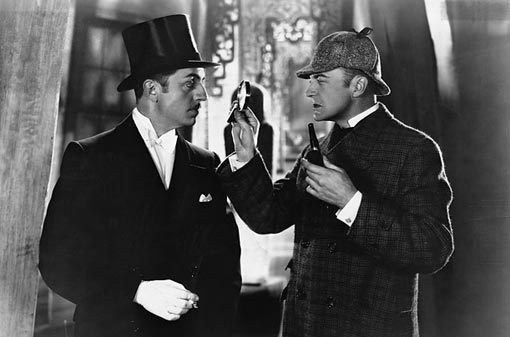
Yes, that callow youth on the left is none other than William Powell!
Landmark Weekend, Part 2
May 5th, 2011
Last Sunday, we enjoyed the second half of our visit to the stately Landmark Loew’s Theatre of Jersey City (click here to read about the first part of our visit). It was a special performance sponsored by the Garden State Theatre Organ Society (who knew).
The first portion of the program showcased the restored Wonder-Morton Theatre Pipe Organ. This incredible instrument is a replacement for the theatre’s original organ, and has been lovingly rebuilt. I don’t know enough about theatre organs to say anything intelligent about it, and words are sadly inadequate to describe its wondrous sound. This video clip, taken during the concert, comes closest (apologies for the movement, I couldn’t stop breathing):
That’s Don Kinnier, premier theatre organist of the east coast, tickling the key stops with his nimble fingers (and toes). If you ever get a chance to see and hear Mr. Kinnier, don’t stop to think, buy the tickets! Particularly if he is accompanying a film. Though I hear he has also been known to play the conservatory organ at Longwood Gardens.
After the opening concert and a brief intermission, we got down to the feature presentation: The Eagle, considered by some critics to be Rudolph Valentino’s finest film role. It was surely one of his most varied performances, ranging from smoldering sensuality to laugh-out-loud humor. As my film-buff companion commented, it was the first time he’d seen Valentino’s teeth.
This 1925 silent film has a great storyline, based on a story by Pushkin. It also boasts lush costumes and scenery, and a tracking scene of a laden banquet table that made film history. Louise Dresser shines as the lusty czarina who falls for one of her cossacks (Valentino), forcing him to flee to the arms of the lovely and mischievous Mascha (Vilma Banky).
But let me not forget the real star of this particular screening — it was the impeccable sound track, provided by Mr. Kinnier and the Wonder-Morton. For 87 minutes, he played a solid wall of music, capturing every shadow and nuance of the film, including a dance scene where you’d swear the actors were moving to the music and not the other way around. I’ve never seen anything like it, and though my companion has seen far more silent films than I, he also assured me that this was a true tour de force.
Jealous? Well I don’t think you’ll have the chance to see Mr. Kinnier at the Loew’s anytime in the near future, but you can still catch the magic of a silent film screening with live organ music (sure to be provided by another excellent musician) on Saturday, May 21, when the Loew’s will present Murnau’s Sunrise. I’ll be there.
Landmark Weekend, Part I
May 2nd, 2011
In these days of 3-D and cineplex, we often bemoan the fall of the movie theater. Not that we aren’t grateful to live within an easy walk of six great film centers (Anthology Film Archive, Film Forum, IFC Center, Angelika, Cinema Village, and Sunshine), but none of them really capture the grandeur that once surrounded the silver screen. And there simply aren’t enough revivals. Then I heard about the Landmark Loews of Jersey City from a colleague who has been volunteering there, helping to restore the balcony seating.
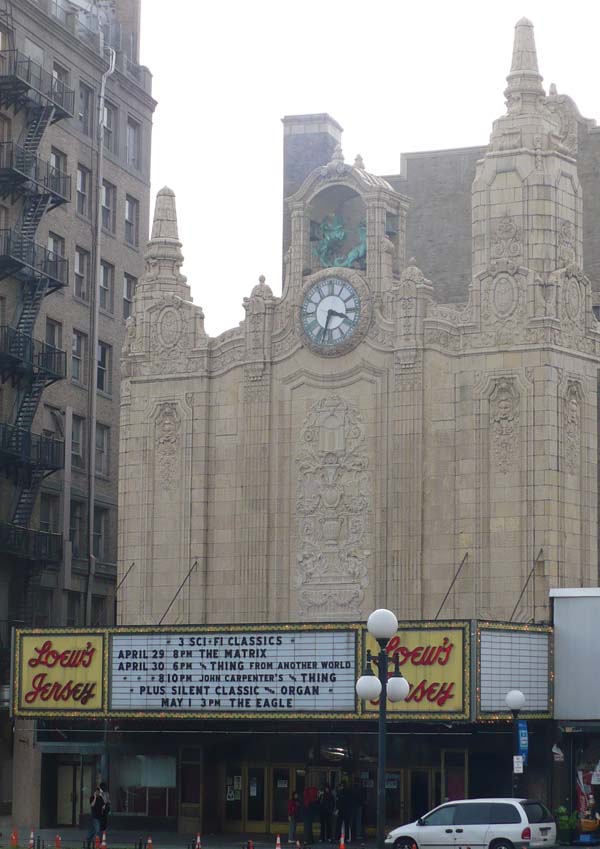
This April, after failing to convince my darling husband to attend a showing of L’Avventura (he hated it in 1960) at Anthology’s brilliantly titled “Boring Masterpieces” series, he agreed to take me to the Landmark Loews instead. They only show films one weekend a month — not bad considering that the entire operation is staffed by volunteers and much of the interior is still under restoration. The offerings on April 30/May 1 were “The Thing From Another World” (both the 1951 and 1982 versions) on Saturday evening, or “The Eagle” on Sunday afternoon. He wanted “The Thing,” I wanted Valentino. So we compromised and rented a hotel room in Jersey City so that we could attend both shows.
Both our hotel and the theater are located steps away from their respective stops on the PATH train, so transportation was a breeze. When we arrived at the theater on Saturday evening, we were at first dismayed to see a line snaking around the block (little did we know that the 50 odd people waiting would be quickly swallowed up by the theater’s massive interior). While we waited to buy our tickets, there was plenty of time to take in the beautiful building.
If only they still used the ticket window…
Once we entered the luscious lobby, we were greeted by volunteers selling tickets (a steal at $7, $5 for seniors and children) and concessions ($1 for popcorn or soda, $2 for candy). Alas, there were no cigarette girls, but perhaps that’s something that will be added once the restoration is complete.
While the exterior is impressive for its sheer size and exquisite terracotta, the interior was breathtaking, despite (or perhaps because of) its air of decaying glamor. I know they are working away like beavers to restore it, but I do hope they leave a few of the cobwebs! What character, what charm. None of the snap shots I took inside came out very well, so you will just have to go and see it for yourself. I doubt if even the finest photographer could do it justice anyway.
And here are a couple of details that didn’t get too badly washed out.
Believe it or not, the lobby was nothing compared to the theater itself. Opened in September of 1929, the Loews seats 3,100 people. My companion nearly burst into tears when he walked in, and by the time RKO came up on the screen, I was ready to bawl myself. We only stayed for the 1951 version of “The Thing.” It was a hoot, with a young James Arness in a surprise role. Best of all, the audience seemed very much alive, very much involved — not only with the film, but with one another as well. Perhaps it’s the low seats (no neck rests) or the shared experience of sitting in that magnificent space, but I’ve rarely been part of such a collective, genial audience. We laughed at all the corny jokes, and held our breath together when the hero was in danger.
Needless to say, we walked out in a dream, eager to return the following day.
Next post: “The Eagle”
« Newer Posts
